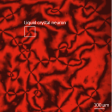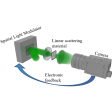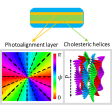



Liquid Crystal Deep Neural Architectures
Recent studies in machine learning have shown that large neural networks can dramatically improve the network performance, however, large networks are problematic in terms of computation time and memory usage for von Neumann computing architectures. On the other hand, modern computers are more power-hungry and less effective than the human brain for a wide range of tasks including perception, communication, and decision-making. Therefore, developing computers that combine, learn, and analyze vast amounts of information quickly and efficiently is becoming increasingly important.
The main goal of LC-DNA is to realize a power-efficient, and computationally fast analog neural network using a nonlinear liquid crystal (LC) as an analog hidden layer in our optical architecture. To demonstrate the scalability, speed, and power efficiency of the proposed analog optical neural network, they are compared with state-of-the-art CPU and GPU technologies on challenging benchmark tasks.
The results obtained within the framework of this project will pave a way for the solution of numerous large-scale complex problems that are currently inaccessible to modern computing technologies.
Optical smart imaging through turbulent media
In real life, it is usually required to provide imaging through complex scattering environments, such as atmospheric turbulence, fog, and biological tissues. As known, such environments strongly limit the imaging resolution, and quite often the distorted images are hard to identify visually. Adaptive optics (AO) is one of the well-known techniques to deal with such problems, which first measures the distorted wavefront of the image and then filters it using a deformable mirror. However, AO is getting problematic for complex objects and strong turbulence due to the lag time in the feedback process. A new optical computing approach has recently been proposed that can predict large and complex chaotic systems with a speed and accuracy only accessible to current supercomputers.
This project aims at using optical computing in AO to overcome the challenge of imaging through the strong turbulences, as new changes necessary on the mirror can be predicted ahead of time. The obtained results will have a strong impact on both fields of optical imaging and optical computing. If successful, our new technique will be one of the most advanced real-world applications of optical computing and can be implemented on various types of flying objects in the future.
Large-scale coherent optical matrix multiplier
Nowadays computing technologies play a huge role in our society. In this context, linear algebra is the most common, and most resource-intensive field in modern computational algorithms, its widespread use makes it possible to build networks of large neurons, optimize large systems, study graphs with multiple nodes, complex connections, and so on.
The project aims to create a new optical computing technology, which in the future will be able to perform large-scale and low energy-consuming linear algebraic operations comparison between existing CPU, GPU and TPU technologies in this field.
Use of patterned chiral liquid crystals to form spatial and spectral beams
This project proposes to create different spatial and spectral beam-forming systems based on patterned chiral liquid crystals. Their combination with standard dielectric mirrors and waveguides provides new opportunities for dynamically controlling the spatial and spectral properties of light. This approach is distinctive in that it can provide extensive beamforming capabilities as well as time modulation for GHz frequencies.

